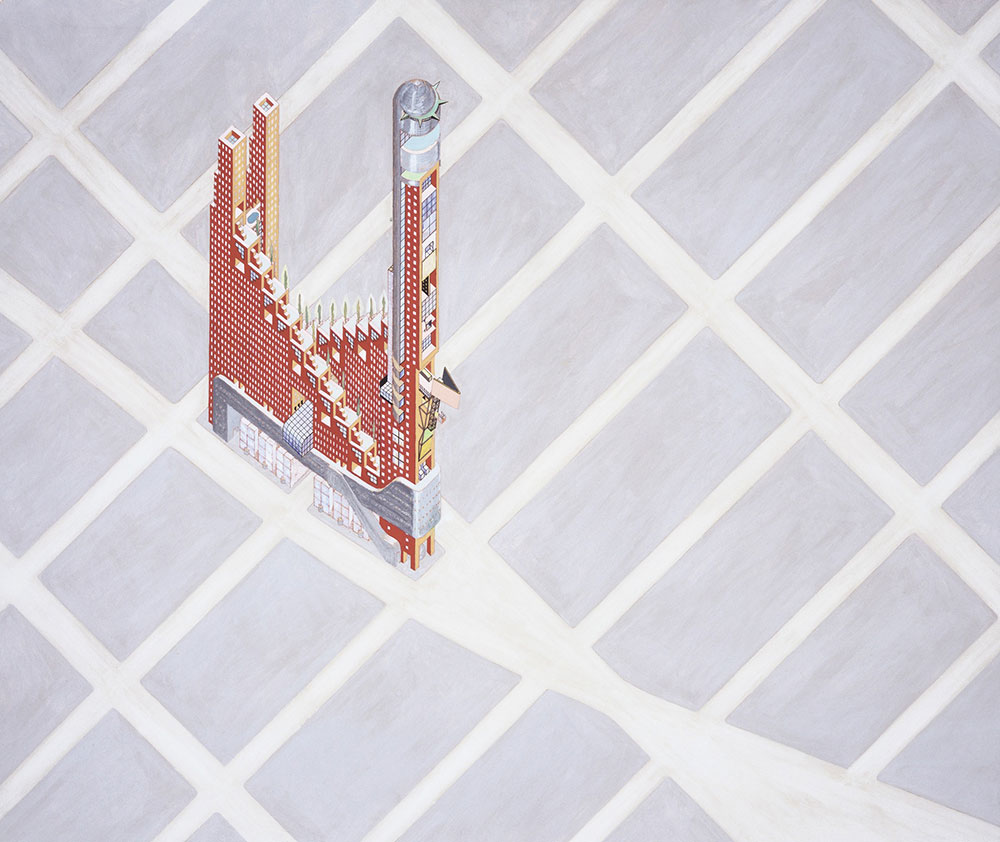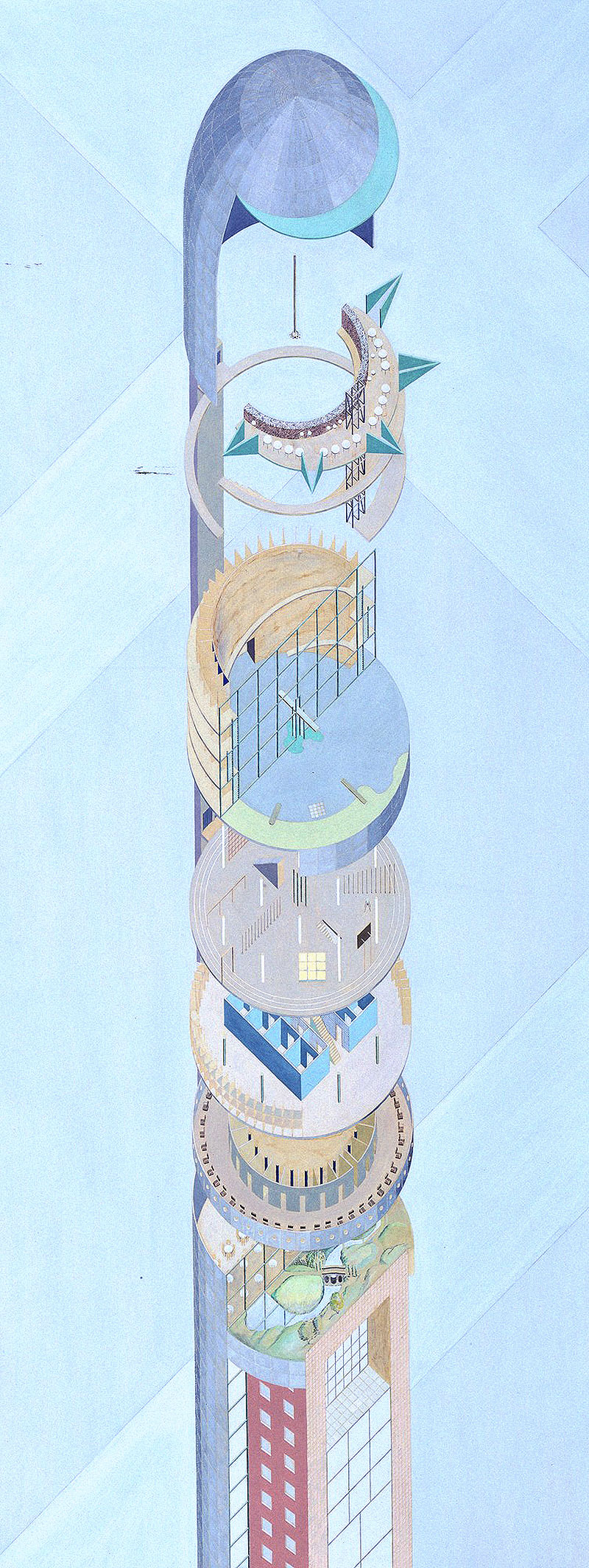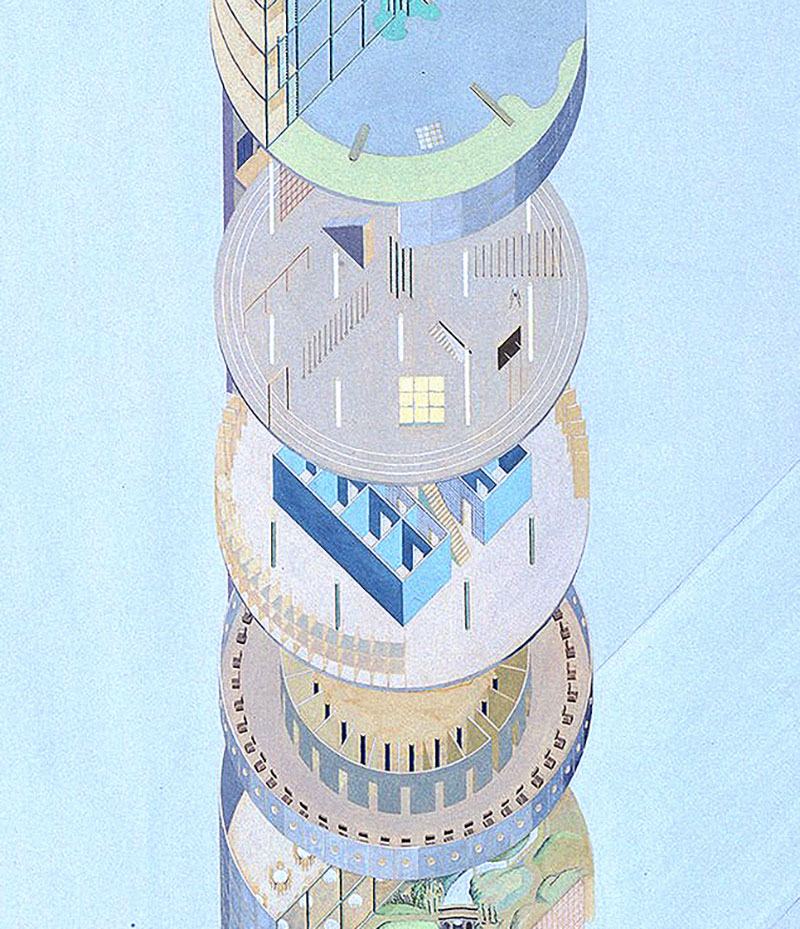Elia and Zoe Zenghelis designed the Hotel Sphinx for Times Square, at the intersection of Broadway and Seventh Avenue, that was included in Rem Koolhaas’ book “Delirious New York”. It proposed and urban hotel as a model for mass housing. Each physical part of the hotel as sphinx accommodates different programmatic functions: the legs contain escalators ascending to theaters, auditoriums, and ballrooms; the two towers of the tail contain studio apartments; the neck contains social clubs; the head is dedicated to relaxation and sports; and the spine houses hotel rooms, apartments, and villas with terraced gardens. Manhattan was intended to function as an extended lobby providing all possible amenities, and, likewise, the ground floor and mezzanine were designed to draw in the city an to take on the character of the Times Square area, a notoriously seedy neighbourhood in the 1970s.
→ The Changing of the Avant-Garde: Visionary Architectural Drawings from the Howard Gilman Collection


